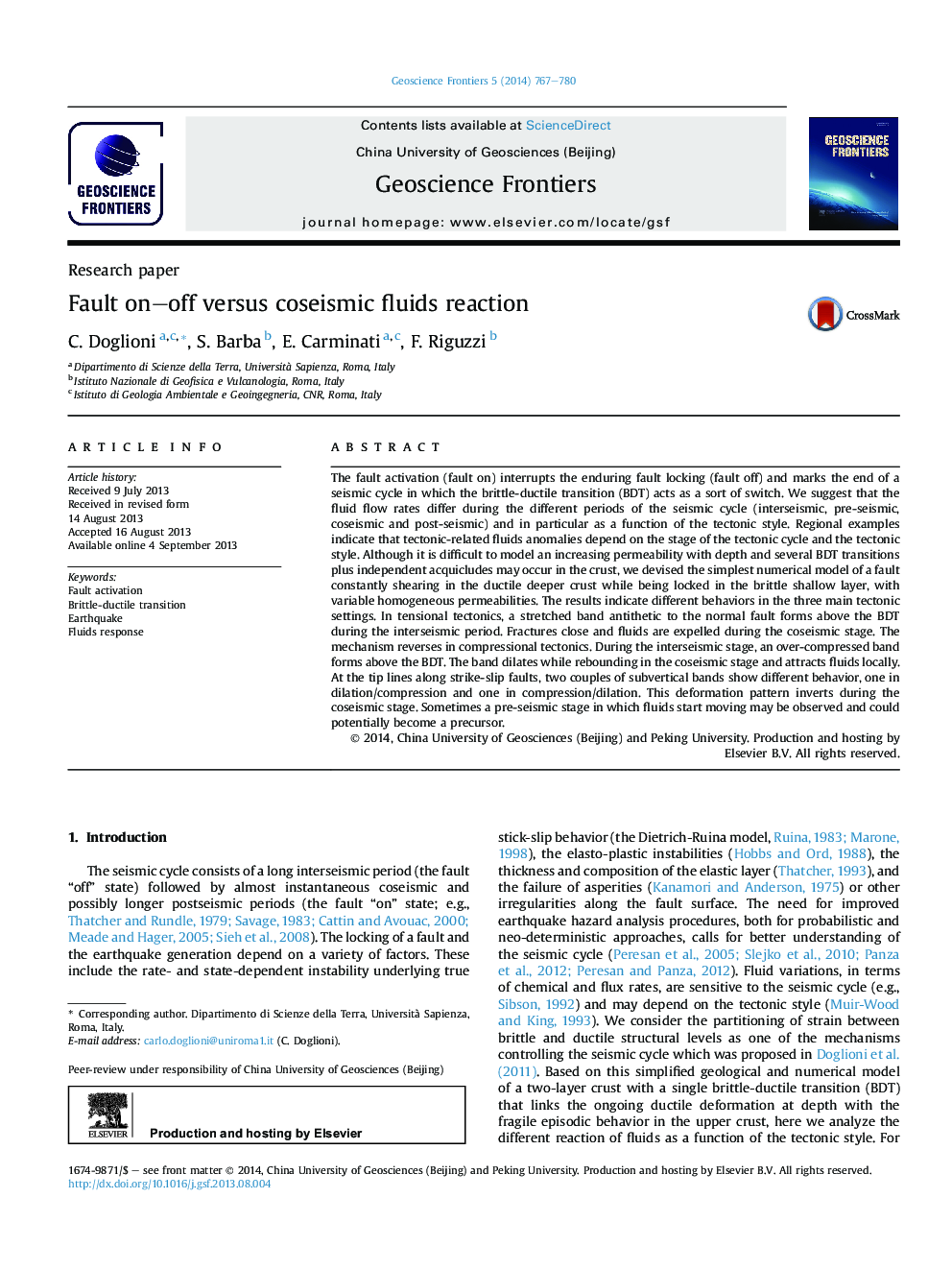| کد مقاله | کد نشریه | سال انتشار | مقاله انگلیسی | نسخه تمام متن |
|---|---|---|---|---|
| 4681687 | 1348867 | 2014 | 14 صفحه PDF | دانلود رایگان |
• The brittle-ductile transition acts as a switch for earthquakes.
• Fluids react differently as a function of the tectonic setting.
• Fluids response may contribute to short-term earthquake forecast.
• To support the model, regional data and numerical modeling are presented.
The fault activation (fault on) interrupts the enduring fault locking (fault off) and marks the end of a seismic cycle in which the brittle-ductile transition (BDT) acts as a sort of switch. We suggest that the fluid flow rates differ during the different periods of the seismic cycle (interseismic, pre-seismic, coseismic and post-seismic) and in particular as a function of the tectonic style. Regional examples indicate that tectonic-related fluids anomalies depend on the stage of the tectonic cycle and the tectonic style. Although it is difficult to model an increasing permeability with depth and several BDT transitions plus independent acquicludes may occur in the crust, we devised the simplest numerical model of a fault constantly shearing in the ductile deeper crust while being locked in the brittle shallow layer, with variable homogeneous permeabilities. The results indicate different behaviors in the three main tectonic settings. In tensional tectonics, a stretched band antithetic to the normal fault forms above the BDT during the interseismic period. Fractures close and fluids are expelled during the coseismic stage. The mechanism reverses in compressional tectonics. During the interseismic stage, an over-compressed band forms above the BDT. The band dilates while rebounding in the coseismic stage and attracts fluids locally. At the tip lines along strike-slip faults, two couples of subvertical bands show different behavior, one in dilation/compression and one in compression/dilation. This deformation pattern inverts during the coseismic stage. Sometimes a pre-seismic stage in which fluids start moving may be observed and could potentially become a precursor.
Figure optionsDownload as PowerPoint slide
Journal: Geoscience Frontiers - Volume 5, Issue 6, November 2014, Pages 767–780
